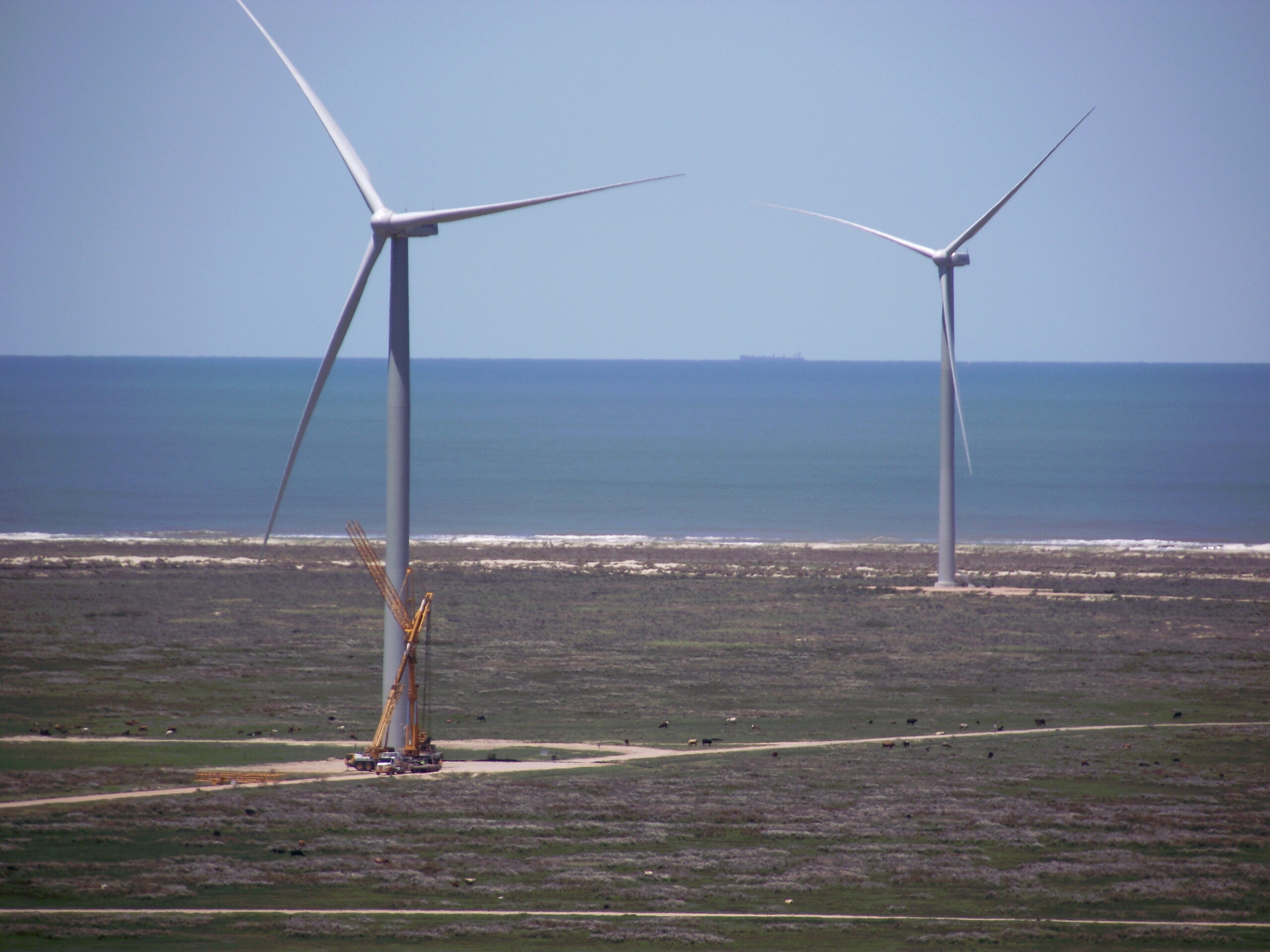Tonnes of CO2eq Compensated
1.725
Project Type
Renewable Energy
Biome
Grassland
Location
Rio Grande
Status
Active
Standard
CDM
O Corredor dos Senandes é um complexo eólico de 108 MW no Rio Grande do Sul, composto por quatro usinas de um mesmo grupo. Registrado no âmbito do Mecanismo de Desenvolvimento Limpo, injeta energia renovável ao Sistema Interligado Nacional, evitando a emissão de ~110 mil tCO2e/ano. Além de diversificar a matriz elétrica, o projeto gera benefícios socioeconômicos como empregos, arrecadação local e renda complementar para proprietários rurais. Com alto índice de nacionalização (60%) de equipamentos, fomenta a indústria e tecnologia nacional, sendo um complemento vital à energia hídrica para a segurança energética e desenvolvimento sustentável do Brasil.
Learn More
O Projeto Corredor dos Senandes contribui diretamente para a redução das emissões de gases de efeito estufa, ao gerar energia limpa e renovável que substitui a eletricidade proveniente de combustíveis fósseis. Com isso, ajuda a evitar a liberação de grandes quantidades de dióxido de carbono e reforça o compromisso com a sustentabilidade ambiental. A estimativa é que o projeto reduza, em média, 110 mil toneladas de CO₂ por ano, alcançando cerca de 770 mil toneladas ao longo do período de crédito definido. Esse impacto positivo coloca o Corredor dos Senandes como uma iniciativa relevante não apenas para o sistema elétrico brasileiro, mas também para os esforços globais de combate às mudanças climáticas.
Objetivos
O Projeto Corredor dos Senandes traz uma série de benefícios ambientais, sociais e econômicos. Além de reduzir as emissões de gases de efeito estufa da matriz elétrica brasileira, o empreendimento garante renda extra aos proprietários de terras, que podem continuar utilizando suas áreas para outras atividades produtivas. Ele também estimula a economia regional, gerando empregos, aumentando a arrecadação de impostos e fortalecendo a infraestrutura local, como estradas, rede elétrica e serviços essenciais.
Outro destaque é o uso de mais de 60% de equipamentos nacionais, o que incentiva o desenvolvimento tecnológico e amplia o know-how da indústria brasileira no setor de energia renovável. A operação demanda mão de obra especializada, abrindo espaço para profissionalização e novas oportunidades de trabalho.
Por fim, o Corredor dos Senandes funciona como complemento à geração hidrelétrica, já que os regimes de vento e chuva no Brasil se equilibram ao longo do ano, reforçando a segurança energética do país.
Location
What are the project SDGs
The project Complexo Eólico Corredor dos Senandes includes 5 of the 17 UN Sustainable Development Goals, which are:

DECENT WORK AND ECONOMIC GROWTH
Promote sustained, inclusive and sustainable economic growth, full and productive employment, and decent work for all. This goal aims to ensure that economic growth is sustainable and inclusive, creating decent jobs and work opportunities for all people. It seeks to achieve full and productive employment and decent work, as well as promote equal opportunities in the labor market, reduce informality, and combat all forms of child labor and forced labor. SDG 8 also encourages the development of policies that support entrepreneurship, innovation, and economic growth in sustainable sectors.

INDUSTRY, INNOVATION AND INFRASTRUCTURE
Build resilient infrastructure, promote inclusive and sustainable industrialization, and foster innovation. This goal aims to promote the development of quality and sustainable infrastructure across all sectors, including transportation, energy, water, and sanitation. It seeks to increase access to technology and information and communication services, as well as promote inclusive and sustainable industrial development. Additionally, SDG 9 encourages innovation and investment in research and development to stimulate economic growth and address global challenges.

SUSTAINABLE CITIES AND COMMUNITIES
Make cities and human settlements inclusive, safe, resilient, and sustainable. This goal aims to improve the quality of life in urban areas by promoting sustainable urban development and ensuring equitable access to basic services such as adequate housing, public transportation, sanitation, energy, and infrastructure. It also seeks to make cities safer, resilient to natural disasters, and environmentally sustainable by protecting cultural and natural heritage and promoting inclusive economic development. SDG 11 recognizes the crucial role of cities in achieving the global Sustainable Development Goals and promoting a more just and sustainable future for all.

RESPONSIBLE CONSUMPTION AND PRODUCTION
Ensure sustainable patterns of production and consumption. This goal aims to promote production and consumption practices that are more resource-efficient, less polluting, generate less waste, and have reduced environmental impact. This includes promoting efficiency in the use of natural resources, reducing waste, adopting cleaner production practices, and implementing sustainable supply chains. SDG 12 also seeks to raise awareness about the environmental and social impacts of unsustainable production and consumption patterns, encouraging the adoption of more sustainable and responsible lifestyles.

CLIMATE ACTION
Take urgent action to combat climate change and its impacts. This goal aims to address the challenges posed by climate change, including reducing greenhouse gas emissions, adapting to adverse impacts already occurring, and promoting climate resilience. Achieving this goal requires actions at various levels, from local to international, aiming at mitigating emissions, developing adaptation strategies, implementing environmental policies, and mobilizing resources to finance measures to combat climate change. SDG 13 recognizes the urgency of acting to avoid the worst effects of climate change and to protect the environment for future generations.






